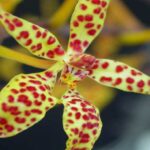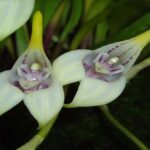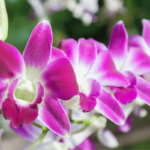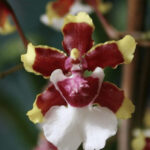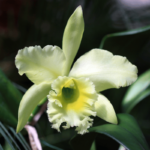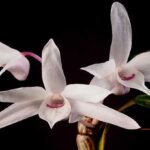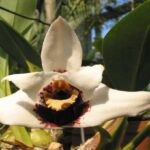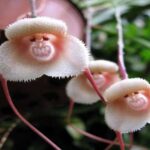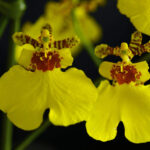Many cultivators struggle to make an orchid bloom. They work hard all year, hoping for flowers, but in the end, they get none.
If you find yourself in this situation, know that the solution can be extremely simple.
- Just correct some mistakes in cultivation.
- In some cases, it just requires patience.
Keep reading, because in this article, you will learn the step-by-step process to make your orchid bloom.
How to Make an Orchid Bloom
![How to Make an Orchid Bloom [Beginner’s Guide] orchid species photos](http://hurtledto60.com/wp-content/uploads/2023/10/orchid-species-photos.jpeg)
To make an orchid bloom, first, ensure that it is old enough to bloom; on average, this age is 5 years.
After that, check if you are cultivating your orchid correctly, especially concerning lighting and fertilization.
If you follow these steps, you will have blooming orchids every year.
Additionally, it’s important to know that an orchid:
- Improperly cultivated
- With many diseases
- Very weak
Rarely produces beautiful blooms.
So, remember, the main factor to make an orchid bloom is correct cultivation.
Now that you have downloaded our free manual, let’s talk a bit more about other problems that can prevent your orchid from blooming.
Factor 1: Watering
Orchids are like people; they need water and other care to survive.
So, if you are not watering your orchid correctly, it will not bloom.
To find out when to water your orchid, use this tip:
- Take a pencil
- Insert it into the substrate
- If the tip changes color, it is still wet; watering is not necessary yet.
Factor 2: Lighting
Many people fail to get their orchids to bloom for this reason.
Lighting is the most crucial factor in an orchid’s flowering.
If you provide too little or too much light to your orchid, it will not bloom.
So, I have 2 recommendations:
- Read the article spots on orchid leaves because we teach you how to know if your orchid is receiving too much light there.
- Seek information about your orchid because some orchids need reddish leaves from the sun to bloom (few species).
Factor 3: Fertilization
There is a very common question in the orchid world.
What is the best fertilizer to make an orchid bloom?
The answer can vary, but one of the most commonly used fertilizers to stimulate orchid blooming is NPK 10 30 15.
This is an excellent option to apply to your orchids just before flowering.
Equilibrated fertilizers like NPK 10 10 10 and NPK 20 20 20 are usually used in other periods of the year.
Factor 4: Humidity and Ventilation
In this case, you need to have some knowledge about your orchid:
- Species
- Necessary humidity
These are two essential pieces of knowledge for cultivating any plant.
But typically, an orchid needs humidity ranging from 50% to 70%.
To learn about your species, read our article orchid species and look for yours.
Regarding ventilation, it should be light and dry.
- Orchids don’t like strong winds.
- Moist winds can bring diseases.
Factor 5: Temperature Drop
Finally, we come to one of the most unknown factors for orchid cultivators.
As stated in the article how to care for orchids, the temperature drop is essential to make an orchid bloom.
Basically, orchids need an average temperature difference of 5°C to 15°C (41°F to 59°F) from day to night.
If you don’t provide this difference, they won’t produce flowers.
When Do Orchids Bloom?
The flowering period of orchids can vary greatly because each species has its own needs and preferences, which are reflected in its flowering period.
Some orchids bloom during a specific season of the year, such as spring or summer. Others can bloom during various seasons, like the Cattleya, which can bloom from February to November.
The blooming time can also vary according to the species. Some orchids have flowers that last only a few weeks, while others can keep their flowers for several months.
It’s important for you to understand the specific needs of your orchid species to determine when it will likely bloom.
Additionally, growing conditions, such as the amount of light, temperature, and humidity, can also influence the flowering period of orchids.
Below is a list of the most common dates for flowering of some of the main orchid species.
- Phalaenopsis: any time of the year
- Cymbidium: usually winter or spring
- Paphiopedilum: usually in autumn
- Cattleya: spring
- Vanda: several times a year
- Dendrobium: winter and spring
As you can see, orchids have various blooming times, and know that these pieces of information can also change depending on where you cultivate your plant.
Common Questions
- Why don’t my orchids bloom? An orchid does not bloom for 2 main reasons, either it is too young, or it is being cultivated incorrectly.
- How can I make my orchid bloom faster? Acquire orchids that bloom in various parts of the year, so they will bloom more often and consequently faster. A great option is hybrid phalaenopsis.
- Why don’t my orchids open their flowers? There are several reasons that can cause this problem, for example, pests on the flowers. To know more, see this article.
- How to make orchids bloom all year round? To have blooming orchids all year round, it is necessary to have more than one orchid in your home. In the manual on how to make your orchid bloom, a technique is taught where you can control the flowering time of your plant.
- How to make the orchid bloom again? The easiest orchid to achieve a second flowering throughout the year is Phalaenopsis; you just need to cut the 3rd node of the floral stem of your orchid. To better understand this process, access this article.
Conclusion – How to Make an Orchid Bloom
Making your orchids bloom is not such a simple task for beginners, but it is possible.
So, dedicate yourself, learn more about your plants, and cultivate them well.
Only then will you have beautiful blooms every year.
If you liked this article, click on the icons below and share it on your social networks, because that will help us a lot.

![How to Make an Orchid Bloom [Beginner’s Guide] Flowers of an orchid](http://hurtledto60.com/wp-content/uploads/2023/10/Flowers-of-an-orchid.jpg)
![How to Make an Orchid Bloom [Beginner’s Guide] Orchid flower](http://hurtledto60.com/wp-content/uploads/2023/10/Orchid-flower.jpg)

